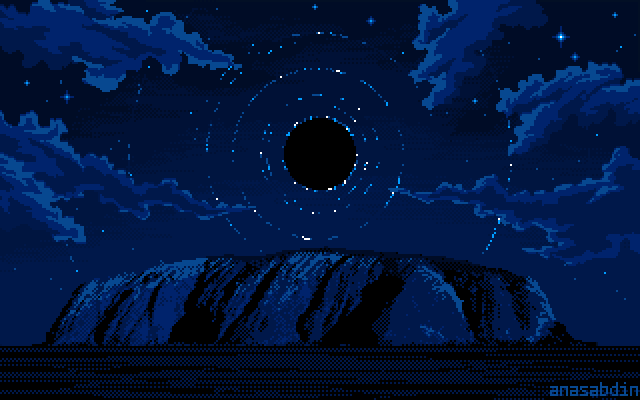Jupiter Rotates : Observe The Graceful Twirl Of Our Solar System’s Largest Planet. Many Interesting

Jupiter Rotates : Observe the graceful twirl of our Solar System’s largest planet. Many interesting features of Jupiter’s enigmatic atmosphere, including dark belts and light zones, can be followed in detail. A careful inspection will reveal that different cloud layers rotate at slightly different speeds. The famous Great Red Spot is not visible at first – but soon rotates into view. Other smaller storm systems occasionally appear. As large as Jupiter is, it rotates in only 10 hours. Our small Earth, by comparison, takes 24 hours to complete a spin cycle. The featured high-resolution time-lapse video was captured over five nights earlier this month by a mid-sized telescope on an apartment balcony in Paris, France. Since hydrogen and helium gas are colorless, and those elements compose most of Jupiter’s expansive atmosphere, what trace elements create the observed colors of Jupiter’s clouds remains a topic of research. via NASA
More Posts from Of-finite-jurisdiction and Others

NGC 1365, Heart of the Galaxy

Uluru blackh●le rise, me, pixel art, 2022


Neptune’s rings in infrared © JWST
The misconception that there is no sound in space originates because most space is a ~vacuum, providing no way for sound waves to travel. A galaxy cluster has so much gas that we've picked up actual sound. Here it's amplified, and mixed with other data, to hear a black hole!











“Black Hole,” poem assembled from quotations from Wikipedia articles




Rings of Gas Giants
l Uranus (Chandra) l Neptune, Jupiter (Webb) l Saturn (Cassini)
Why is this heat so hot 😩

RS Puppis, one of the brightest Cepheid variable stars © Hubble
With NASA announcing their streaming service NASA+ and also announcing it’s going to be free and also ad free, I’d just like to appreciate the lengths they go to make scientific knowledge and exploration as available as they possibly can.
-
 tethys-the-aquatic-sea-godness reblogged this · 2 years ago
tethys-the-aquatic-sea-godness reblogged this · 2 years ago -
 tethys-the-aquatic-sea-godness liked this · 2 years ago
tethys-the-aquatic-sea-godness liked this · 2 years ago -
 echo1331 reblogged this · 2 years ago
echo1331 reblogged this · 2 years ago -
 engelart liked this · 2 years ago
engelart liked this · 2 years ago -
 koraline-k liked this · 2 years ago
koraline-k liked this · 2 years ago -
 lostintheozoneagain2 reblogged this · 2 years ago
lostintheozoneagain2 reblogged this · 2 years ago -
 lostintheozoneagain2 liked this · 2 years ago
lostintheozoneagain2 liked this · 2 years ago -
 leelooel liked this · 2 years ago
leelooel liked this · 2 years ago -
 thethirdman8 liked this · 2 years ago
thethirdman8 liked this · 2 years ago -
 thissometimepoet liked this · 2 years ago
thissometimepoet liked this · 2 years ago -
 lookingformyperfectsandwich reblogged this · 2 years ago
lookingformyperfectsandwich reblogged this · 2 years ago -
 artinwood54 liked this · 2 years ago
artinwood54 liked this · 2 years ago -
 the-gypsy-moon liked this · 2 years ago
the-gypsy-moon liked this · 2 years ago -
 stratabilly liked this · 2 years ago
stratabilly liked this · 2 years ago -
 lookingformyperfectsandwich liked this · 2 years ago
lookingformyperfectsandwich liked this · 2 years ago -
 lonialine liked this · 2 years ago
lonialine liked this · 2 years ago -
 inky-skyes liked this · 2 years ago
inky-skyes liked this · 2 years ago -
 siqlycoris-radiata liked this · 2 years ago
siqlycoris-radiata liked this · 2 years ago -
 theoldtentacledgods liked this · 2 years ago
theoldtentacledgods liked this · 2 years ago -
 orifice-torture reblogged this · 2 years ago
orifice-torture reblogged this · 2 years ago -
 tumbleringismycopingmechanism liked this · 2 years ago
tumbleringismycopingmechanism liked this · 2 years ago -
 hick63boy liked this · 2 years ago
hick63boy liked this · 2 years ago -
 xdxliax liked this · 2 years ago
xdxliax liked this · 2 years ago -
 tomxiii reblogged this · 2 years ago
tomxiii reblogged this · 2 years ago -
 tomxiii liked this · 2 years ago
tomxiii liked this · 2 years ago -
 seelater liked this · 2 years ago
seelater liked this · 2 years ago -
 danielledreamsthedayaway reblogged this · 2 years ago
danielledreamsthedayaway reblogged this · 2 years ago -
 susutomlinson liked this · 2 years ago
susutomlinson liked this · 2 years ago -
 tigerfairy777 reblogged this · 2 years ago
tigerfairy777 reblogged this · 2 years ago -
 small-cog reblogged this · 2 years ago
small-cog reblogged this · 2 years ago -
 max1nee liked this · 2 years ago
max1nee liked this · 2 years ago -
 mp-64 liked this · 2 years ago
mp-64 liked this · 2 years ago -
 ryochan liked this · 2 years ago
ryochan liked this · 2 years ago -
 chinawalls liked this · 2 years ago
chinawalls liked this · 2 years ago -
 helenoerato liked this · 2 years ago
helenoerato liked this · 2 years ago -
 novastellaris liked this · 2 years ago
novastellaris liked this · 2 years ago -
 20jae19 liked this · 2 years ago
20jae19 liked this · 2 years ago -
 durinsbride liked this · 2 years ago
durinsbride liked this · 2 years ago -
 criticalroller22 liked this · 2 years ago
criticalroller22 liked this · 2 years ago

Finn OFJ’s space blog. Do you love space?? you better. or else
39 posts

